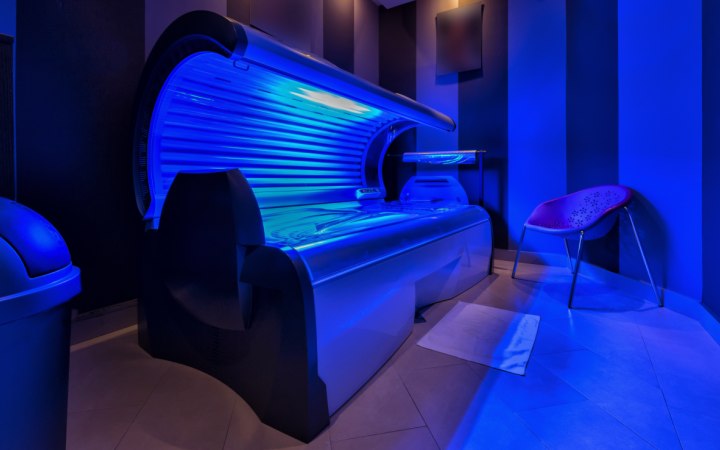Tanning Bed Warnings

New Tanning Bed Warning from the World Health Organization
For decades the practice of using tanning beds has been argued over as advocates claim that the beds are designed to use only the safer UV rays and offer controlled dosage, while opponents counter that since UV damage and risk is cumulative, and the sun beds generally offer higher UV levels than found outside in sunshine, they are just as dangerous as outdoor tanning, if not moreso.
But this argument was taken to a new place on Tuesday, July 28, 2009 when the World Health Organization's International Agency for Research on Cancer put tanning beds and ultraviolet radiation in the top category for cancer risk. This means that sun beds and tanning booths are now deemed to be a human carcinogen. The ultraviolet light emitting tanning beds had been previously considered a "probable" cause of cancer.
Misconception
Sun exposure, in moderation, is safe for many people, such as people who don't have fair skin and red hair, according to the Joint Canadian Tanning Association, an industry group.
Facts
According to International Agency for Research on Cancer and other research groups, studies have shown that there is no safe way to tan. A tan from the sun's rays or under lights in a tanning salon will damage your skin.
Misconception
There is a lack of research indicating that moderate, non-sunburn-related sun exposure is linked to increased risk of cancer or other problems. This information was posted in a press release issued by the Joint Canadian Tanning Association in response to the WHO report.
Facts
The International Agency for Research on Cancer reviewed about 20 scientific studies and found the risk of skin cancer jumps when people start using tanning beds before age 30. Furthermore, new research has emerged that shows risks can increase even when a person doesn't experience sunburn. This is according to the acting director of cancer control policy at the Canadian Cancer Society.
Misconception
Tanning beds can help people in sun-deprived climates and seasons produce adequate levels of vitamin D, which has been found to decrease risks for certain types of cancer, particularly in winter months when there is little sun exposure.
Facts
While tanning beds are a source of some ultraviolet B radiation, which can help the body produce vitamin D, they have also been found to emit five times the ultraviolet A rays as the sun during peak times. And although ultraviolet A rays have typically been associated with an increased risk for cancer, the new WHO report shows that all kinds of ultraviolet rays led to mutations in mice, which raises fears they could increase cancer risks in humans.
The bottom line is that there's "much safer alternatives" for getting vitamin D. The Cancer Society has gathered and published this information and recommends getting a few minutes of sun exposure when the sun isn't at its peak (between 11 a.m. and 4 p.m.) and taking supplements during winter months.
Misconception
Using a sun bed before going on vacation to a sunny destination to “pre-tan” can help provide a protective base tan. (This argument is made by tanning advocacy groups.)
Facts
The American (and Canadian) Cancer Society has said tanning before a vacation may provide protection equivalent to SPF 4, but that there are better alternatives to protection from the sun's harsh rays, such as sunscreen with high SPF levels or wearing clothing.
© Greatestlook.com
Photo: Edvard Nalbantjan/Shutterstock